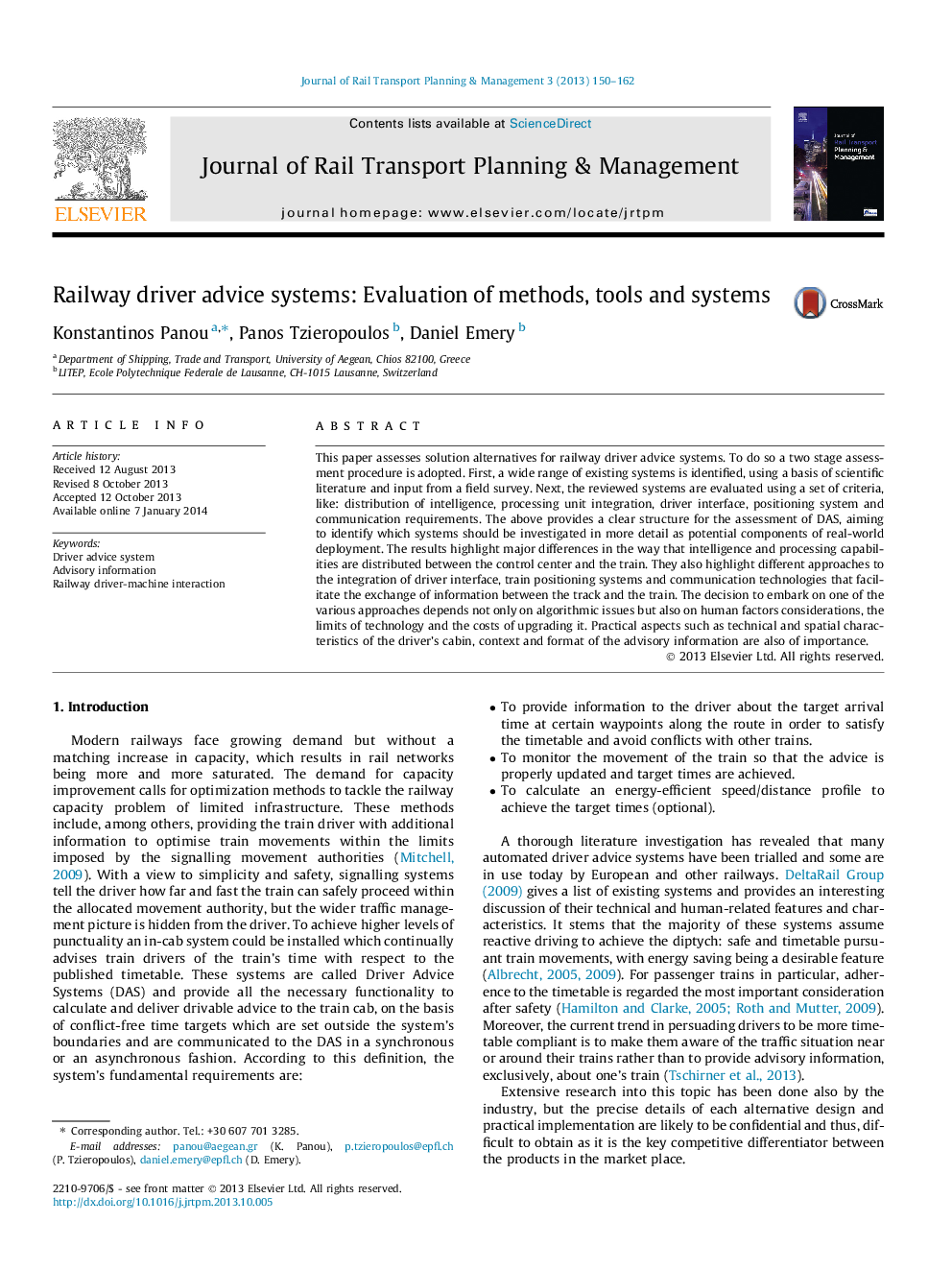| Article ID | Journal | Published Year | Pages | File Type |
|---|---|---|---|---|
| 286430 | Journal of Rail Transport Planning & Management | 2013 | 13 Pages |
This paper assesses solution alternatives for railway driver advice systems. To do so a two stage assessment procedure is adopted. First, a wide range of existing systems is identified, using a basis of scientific literature and input from a field survey. Next, the reviewed systems are evaluated using a set of criteria, like: distribution of intelligence, processing unit integration, driver interface, positioning system and communication requirements. The above provides a clear structure for the assessment of DAS, aiming to identify which systems should be investigated in more detail as potential components of real-world deployment. The results highlight major differences in the way that intelligence and processing capabilities are distributed between the control center and the train. They also highlight different approaches to the integration of driver interface, train positioning systems and communication technologies that facilitate the exchange of information between the track and the train. The decision to embark on one of the various approaches depends not only on algorithmic issues but also on human factors considerations, the limits of technology and the costs of upgrading it. Practical aspects such as technical and spatial characteristics of the driver’s cabin, context and format of the advisory information are also of importance.
